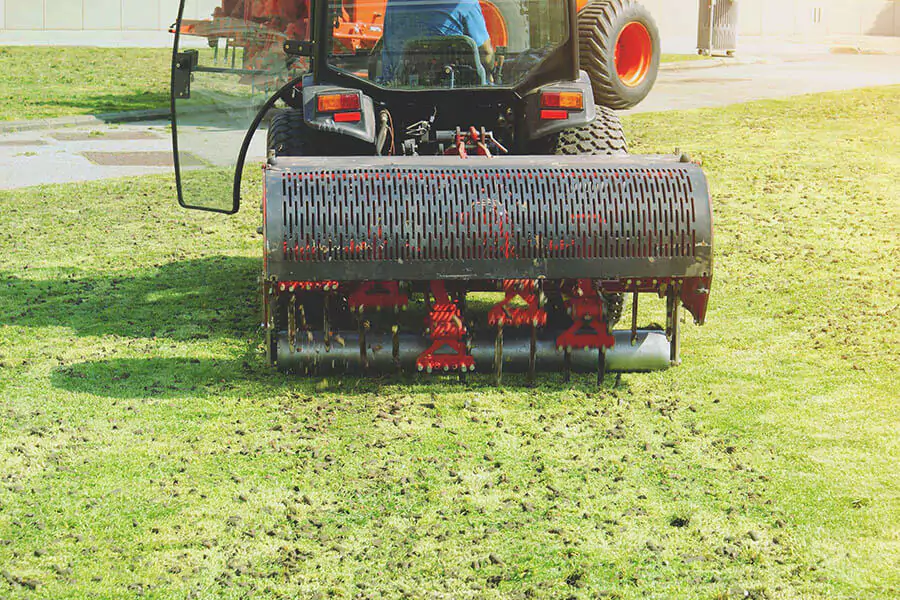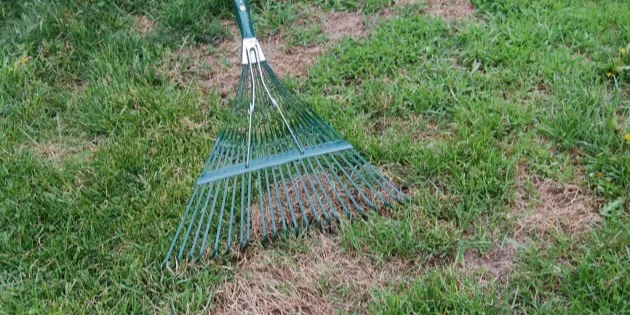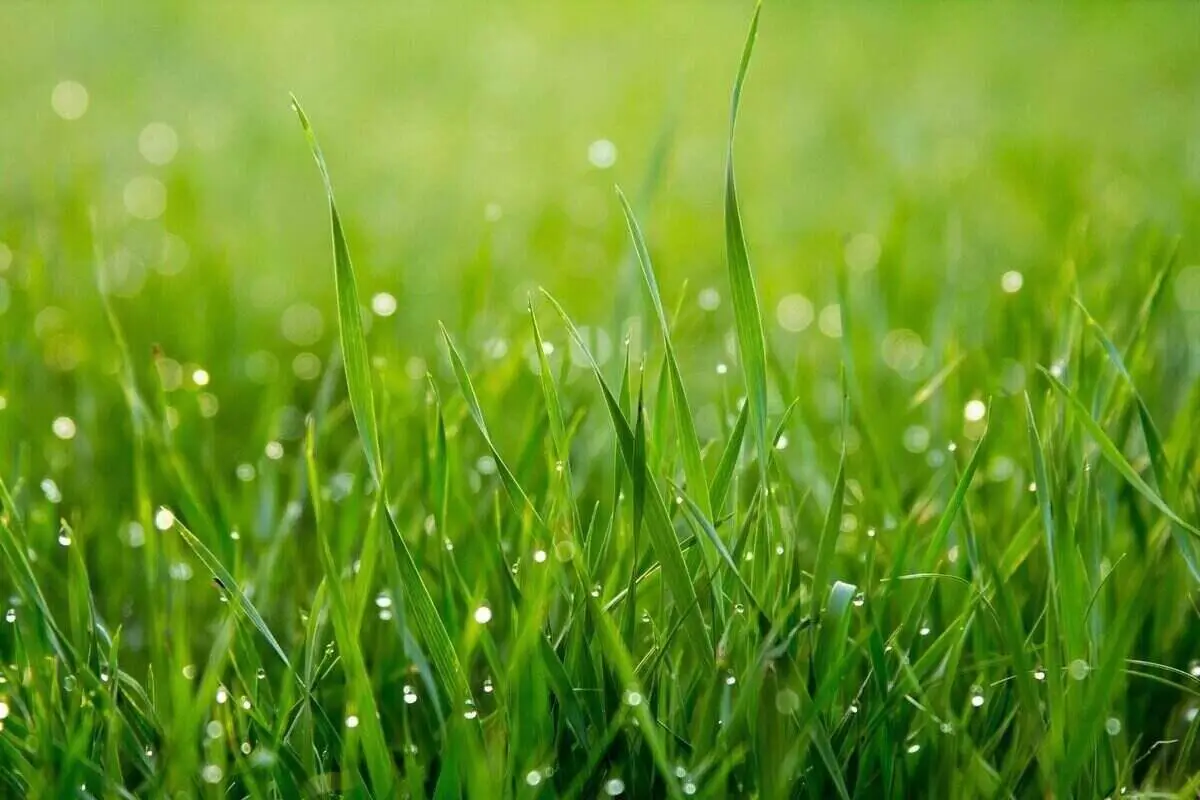How Close to Cut Grass Before Winter?
Last Updated on January 16, 2025 by Duncan
As a homeowner, you know that you shouldn’t mow your grass before winter the same way you did it during summer.
As a rule of thumb, you shouldn’t cut your grass too short for the winter. The last few cuts of the year should be higher than the summer mowing.
The reason is that leaving the grass longer in the winter helps improve its health for when it’s time to start mowing again in the spring.
In preparation for dormancy, grass transfers nutrients to its roots, which helps enhance its winter resilience.
Raising the deck for the final few cuts to leave the grass a little longer will help provide more insulation to the roots, which is much needed during the harsh winter months.
Mowing the grass too close to the ground reduces the potential for nutrient transportation, can stress the lawn before dormancy, and can improve weed seed germination by allowing the light more access to the soil. And you don’t want this, do you?
With this in mind, you might be wondering, how close to cut grass before winter, right?
Well, cut your grass to at least 2 ½ – 3 inches. As mentioned, if you cut it too short, the grass will not be able to photosynthesize and supply nutrients to the roots.
If, on the other hand, you cut it too high, the frost may become matted after a snowstorm.
While this is the case, not all grasses are the same. To help you out, here are some of the most popular lawn grasses and the ideal mowing heights:
Bermuda grass
This low-maintenance turf grass has an optimal winter height of roughly 2 inches and will go dormant around September. In the spring, trim it to 1 1/2 to 2 1/2 inches to foster new growth.
St. Augustine grass
This grass has an excellent winter height of roughly 3 inches and goes dormant around early to mid-November. When spring arrives, a lower height will help in its emergence from winter slumber.
Zoysia grass
Since this drought-tolerant grass lies dormant in the winter, keep it 3 inches tall. The ideal height for spring and summer is 2 1/2 to 3 1/2 inches.
Buffalo grass
This prairie grass can withstand mild winters and grows to a height of 5 inches during the dormant season. 4-6 inches is the optimal height to have in the spring and summer.
When should you stop cutting grass for winter?
When you should stop mowing your lawn for the winter will be determined by the weather in your area.
If you reside in an area with warmer temperatures and more daylight, you can cut your lawn later than if winter arrives early, with short, dark days and lower temperatures.
The limited quantity of sunshine available throughout autumn and winter will lead to your lawn eventually becoming dormant and stopping growing, or its development rate will reduce significantly.
When this happens, you should automatically stop mowing.
To be on the safe side, continue mowing once a week until then. Only when you discover your grass isn’t growing or when frost/snow covers it should you stop trimming it for the winter.
If the winter is especially mild and the grass grows, continue mowing.
Other ways to take care of your grass during winter
Besides cutting your grass short, there are plenty of other things you should do to ensure that you have healthy-looking grass in spring. Some of the things you need to do include:
Get rid of fallen leaves
In the autumn, leaves fall from trees and can land on your lawn, blocking sunlight and preventing the right amounts of water from reaching the roots.
This can lead not only to lawn diseases but also to the ultimate death of the grass.
To avoid damage to your lawn, inspect it on a regular basis and pick up any leaves that begin to collect. One of the best ways to pick the leaves is using a rake.
Trim the edges of the lawn
Summer months allow grass to flourish, and when fall arrives, it’s a good idea to trim the lawn’s edges to keep your garden looking tidy.
When you care for the edges, they will act as a barrier for plant roots, preventing weeds and flowers from sprouting on your grass.
As a consequence, you have a weed-free lawn.
Fertilize the lawn
Apply fertilizer to the grass before the first freeze to avoid the soil’s nutrients from being depleted. When you do this, the fertilizer will remain in the soil throughout the winter, feeding the grass roots as temperatures decrease.
You replenish the nutrients lost by the earth during the hot, dry summer months by feeding the soil during the cooler months.
When applying the fertilizer, ensure that you are applying the right one with the nutrients your soil lacks.
As you can tell, this means that you should have tested your soil before applying the fertilizer.
Keep ice melt out of your lawn.
Whether you’ve never used ice melt products before or if you do, you should be aware of the risk of lawn damage.
Use ice melt with caution in grassy areas bordering paths, landscaping, and sidewalks.
Although it is useful for keeping these areas from being too slippery, if it comes into contact with the grass along the pavement, it will cause harm in the spring.
Examine the product’s packaging thoroughly before using it in these areas.
You will even be better off avoiding it at all costs.
Don’t walk on grass.
Did you know it’s bad to walk on short, brown grass? This is easy to overlook, especially when the grass is blanketed in fluffy white snow.
To protect your grass and ensure that it looks good when spring comes, avoid walking on it.
Although grass may endure some wear and tear, it will struggle to recover if a path forms as a result of constant foot traffic.
Winter is also the time of year when your soil is most prone to compaction, so walking on it will add insult to injury.
If possible, avoid walking on the grass until the weather warms up in the spring.
Seed the lawn
If your grass has any bald spots, fill them with enough seeds.
The fresh seedlings will help clean up any existing problems and ensure your grass looks full again next spring.
Protect the lawn from moss.
The extra moisture on your lawn during the winter can stimulate moss growth, and moss can destroy your lawn. You don’t want this, do you?
Thankfully, you can use a treatment to keep it from growing.
To learn how to protect and treat your lawn from moss, read this detailed guide we prepared.


